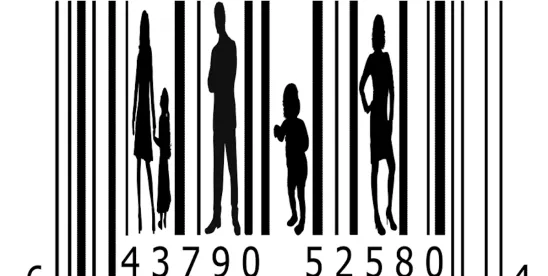Overview: Telehealth providers are uniquely positioned to monitor for human trafficking when interacting with patients. Survivor records indicate that health services are among the most common points of access to help trafficked persons, and nearly 70% of human trafficking survivors report having had access to health services at some point during their exploitation. While there’s limited data regarding trafficked persons’ use of telehealth services, empirical evidence demonstrates that a greater proportion of trafficked persons completed telehealth appointments during the early period of the COVID-19 pandemic than pre-pandemic. To enable telehealth providers to assist trafficked patients, this article discusses the legal landscape surrounding human trafficking and lays out best practices for telehealth providers.
Background: Telehealth providers are subject to a patchwork of legal requirements aimed at reducing human trafficking. If the patient is under the age of 18 or is disabled, many states require telehealth providers to report instances in which they know or reasonably believe the patient has experienced or is experiencing abuse, mistreatment, or neglect. Some states, such as Florida and New Jersey, also require telehealth providers partake in anti-trafficking education.
Online platforms that offer telehealth services are also subject to federal legislation regarding sex trafficking monitoring. In 2018, US Congress passed the Allow States and Victims to Fight Online Trafficking Act of 2017 (FOSTA). The law was enacted primarily in response to unsuccessful litigation against Backpage.com, a website accused of permitting and even assisting users in posting advertisements for sex trafficking. Before FOSTA’s enactment, Section 230 of the Communications Decency Act essentially shielded online platforms from liability for such conduct. FOSTA, however, effectively created an exception to Section 230 by establishing criminal penalties for those who promote or facilitate sex trafficking through their control of online platforms. These penalties, generally limited to a fine, imprisonment of up to 10 years, or both, may be heightened for aggravated violations, which are violations involving reckless disregard of sex trafficking or the promotion or facilitation of prostitution of five or more people. State attorneys general and, in cases of aggravated violations, injured persons also may bring civil actions against those who control online platforms in violation of the law.
Since FOSTA’s inception, the US Department of Justice (DOJ) has brought at least one criminal charge under the law. In 2021, after being charged by DOJ, the owner of the online platform CityXGuide.com pleaded guilty to one count of promotion of prostitution and reckless disregard of sex trafficking, a violation of FOSTA’s aggravated violations provision. According to DOJ officials, more charges have not been brought under FOSTA because the law is relatively new and federal prosecutors have had success prosecuting those who control online platforms by bringing racketeering and money laundering charges. Nonetheless, it is possible that prosecutors will pursue FOSTA violations more regularly during the Trump administration, particularly because US President Donald Trump signed it into law during his first term in office, calling it “crucial legislation.”
Best Practices for Telehealth Providers
Telehealth providers and online platforms that offer telehealth services should consider adhering to the following best practices when monitoring for human trafficking:
- Complete Anti-Trafficking Training. Telehealth providers should complete an anti-trafficking training or educational program on a regular basis, regardless of whether they are legally required to do so. One such program is the US Department of Health and Human Services’ Stop, Observe, Ask, and Respond (SOAR) to Health and Wellness Training program. Telehealth providers may attend SOAR trainings in person or online and, depending on the program, may receive continuing education credit for their participation.
- Implement a Referral Network. Prior to monitoring patients, telehealth providers should prepare a comprehensive referral list with detailed procedures for assisting identified individuals who have been trafficked or are vulnerable to trafficking. Referral lists should help patients access services that meet various immediate, intermediate, and long-term needs. Referral lists also should include information about how to connect with both national and local anti-trafficking resources.
- Be Aware of Indicators of Human Trafficking for Adults. The National Human Trafficking Training and Technical Assistance Center has developed indicators of adult human trafficking. Indicators that may arise during a telehealth visit include instances where:
- The patient is not in control of personal identification or does not have valid identification as part of the visit
- The patient does not know where they live (or their geolocation does not match their stated location)
- The patient’s story does not make sense or seems scripted
- The patient seems afraid to answer questions
- The patient appears to be looking at an unidentified person offscreen after speaking
- The patient’s video background appears to be an odd living or work space (may include tinted windows, security cameras, barbed wire, or people sleeping or living at worksite)
- The patient exhibits or indicates signs of physical abuse, drug or alcohol misuse, or malnourishment.
- Be Aware of Indicators of Human Trafficking for Children. Indicators of human trafficking for children often differ from those for adults. The National Center for Missing & Exploited Children (NCMEC) has issued a list of risk factors useful for identifying possible indicators of child sex trafficking. Although NCMEC cautions that no single indicator can accurately identify a child as a sex trafficking victim, the presence of multiple factors increases the likelihood of identifying victims. Indicators that may arise during a telehealth visit include the following:
- The child avoids answering questions or lets others speak for them
- The child lies about their age and identity or otherwise responds to the provider in a manner that doesn’t align with their telehealth profile or account information
- The child appears to be looking at an unidentified person offscreen after speaking
- The child uses prostitution-related terms, such as “daddy,” “the life,” and “the game”
- The child has no identification (or their identification is held by another person)
- The child displays evidence of travel in their video background (living out of suitcases, at motels, or in a car)
- The child references traveling to cities or states that do not match their geolocation
- The child has numerous unaddressed medical issues.






 />i
/>i

